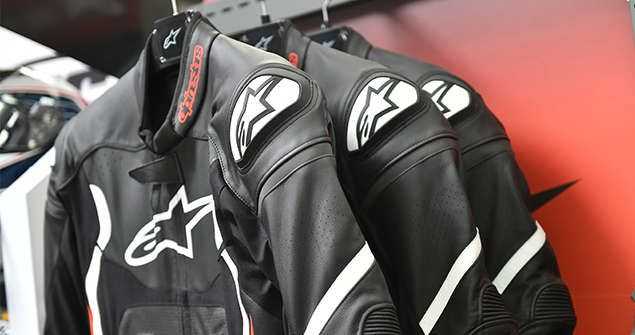
How much does motorcycle clothing cost?
When you are first starting out on two wheels it’s certainly exciting but can sometimes seem a little overwhelming as there are lots of things you need to sort out.
Whether it’s buying a motorcycle or scooter , sorting your insurance or buying the right riding gear, there’s plenty for you to think about and if you’re not careful, plenty of ways you can spend your money.
From insurance to tax, there are lots of things you must pay for, including a helmet, and that can sometimes mean that new riders, particularly younger ones, look to save money on protective gear and clothing.
We’ve broken it down into the important stages to give some advice that can help you pick the right path, save money and concentrate on having fun on two wheels with the right motorcycle clothing for what you need to use it for.
Where do you start?
Let’s start with the absolute basics. Legally, all you actually need to ride a motorcycle is an approved motorcycle helmet which has a legal visor, or an open face helmet with an approved set of goggles that meet government safety regulations.
You can find the current legal requirements for helmets and goggles here…
However, the risk of causing severe, long-lasting injury, even at lower speeds in the event of a crash on a scooter or motorcycle, means wearing a jacket, jeans, protective boots and gloves is well advised.
Picking boots and gloves are relatively simple. What can you afford to pay and do they fit well? If you intend to ride during winter then a pair of waterproof textile gear, waterproof boots and gloves will make the experience far more pleasant.
What about the budget?
If keeping to a lower budget is of importance then choosing the right sort of kit will help keep your costs down while still allowing you to have good quality, protective kit that can work across much of the year.
While it’s nice to be able to have a set of motorcycle riding gear for summer and winter, that’s not always something everyone can afford. If this is the case then choosing the best quality set of textile two piece riding kit you can afford will give you the best options.
Many have removeable thermal linings and also vents that can be unzipped so they quickly turn from a warm winter jacket into something that can work in summer too.
Prices can start from as little as £99 for a textile jacket and the same cost for a set of textile trousers to go with it. You can get cheaper kit but most doesn’t have any CE approved armour.
For this sort of money you will be foregoing some of the latest technology in terms of breathable and waterproofing internal layers but it should still have CE-approved armour and work well to keep you dry.
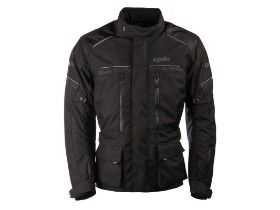
Of course, if money is no obstacle, you can spend up to £1600 on one of the very latest jackets that has a built-in airbag which senses a crash and inflates the airbag to help protect your spine, collarbones and torso.
Choosing the right crash helmet
This is a key part of ensuring you are as safe as possible and there are some important things to consider.
No matter how cheap they might be, DO NOT buy a secondhand crash helmet as you have no idea what has happened to them in the past and they may well have critical defects after being dropped.
When you can buy a well-known branded crash helmet for around £100, taking a shortcut really isn’t a good idea when there is so much at stake. As paintschemes become outdated by newer versions they are often heavily discounted so picking up a bargain isn’t too much of a challenge either online or at motorcycle shows.
As with all of the motorcycle riding gear you will need, ideally buying the most expensive you can afford will allow you to buy something that should last for years.
No matter what style of crash helmet you choose, ensuring it fits correctly and remains comfortable is the most important part. It should be very snug and shouldn’t move much at all when fastened and when you attempt to move it by twisting or lifting off your head.
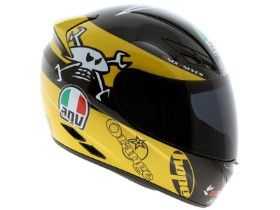
All crash helmets will feel a little tight when they are new but don’t be tempted to go for a larger size as they will ‘give’ in time and a larger helmet will become far too loose.
We’ve picked out some choices that range from the most cost-effective available out there to some of the more expensive to show what’s on offer. The choice of what motorcycle riding clothing you decide upon is, of course, down to personal decisions and for some riders they want to pick and choose what they wear.
Buying tips for motorcycle clothing
Once you have worked out your budget, choosing motorcycle riding kit comes down to picking what is going to work best for the sort of riding you do.
If you are going to be riding on a racing circuit frequently then one or two-piece leathers that zip together are going to be essential as you cannot ride on track without leathers.
If you are only going to be riding on the road and cannot afford two different sets of riding clothing, textile gear is the best bet but it’s important it fits well to avoid the material annoying you when it flaps around in the wind or, worse still, moves in the event of an accident and stops being so protective if the armour moves.
Most jackets have available adjustment in the form of Velcro straps on the waist and some have them on the upper arms to ensure a snug fit. The same is true of trousers.
Ideally, the jacket and trousers should be able to zip together not only to increase the protection they offer but also to keep out the elements.
These days, even the cheapest available kit is pretty decent and the discount supermarkets like Lidl and Aldi do stock some items including jacket and trousers, underlayers and other items.
If you know you’re only going to be riding in the warmer months then a set of two-piece leathers will probably work well. These can work with motorcycle riding jeans and a set of boots if you feel comfortable doing this.
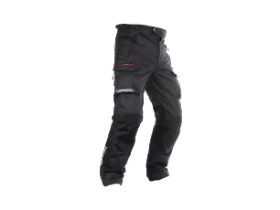
A set of cheap one or two piece waterproofs which you can stash while riding will give these leathers some wet weather protection if you get caught out in a shower. Waterproofs can cost less than £30 and last for years. Cheap non-motorcycle waterproofs can do the job too – just make sure you buy a set big enough to go over the top of your normal riding gear.
What about gloves and boots?
Gloves and boots play an important protection role when riding motorcycles or scooters; particularly gloves as your hands are normally the first part of you to touch down in a crash.
Gloves don’t have to cost the earth but if money is really tight then buying one pair of warm winter gloves that are waterproof will do the job. When you have more cash available, adding a second pair for the summer months can work to make riding more pleasant in the hotter months.
Comfort and protection are the two greatest things to look for and protection from cheaper gloves can still be very good as it comes in the form of hard panels on fingers, the palm and on the back of the hand. You can pick up a decent entry level pair of gloves for less than £50.
In terms of boots, a waterproof pair will be the most practical as they will work throughout the year. If you know you’re only going to be a fair weather rider then choosing a lighter pair for summer will work well for you.
Boots can feel very stiff when they are new and it’s definitely a good idea to break them in (maybe by wearing them around the house for a while) before you embark on any long journeys and they make your feet sore.
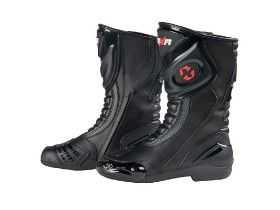
An entry-level set of boots that are waterproof can be your for less than £70. You can get cheaper ones but these tend to be the ones that don’t extend up the calf as high and therefore don’t offer as much protection to your leg.
Further information: gov.uk/ride-motorcycle-moped/safety-equipment.
The images in this article were supplied by sportsbikeshop.com.



